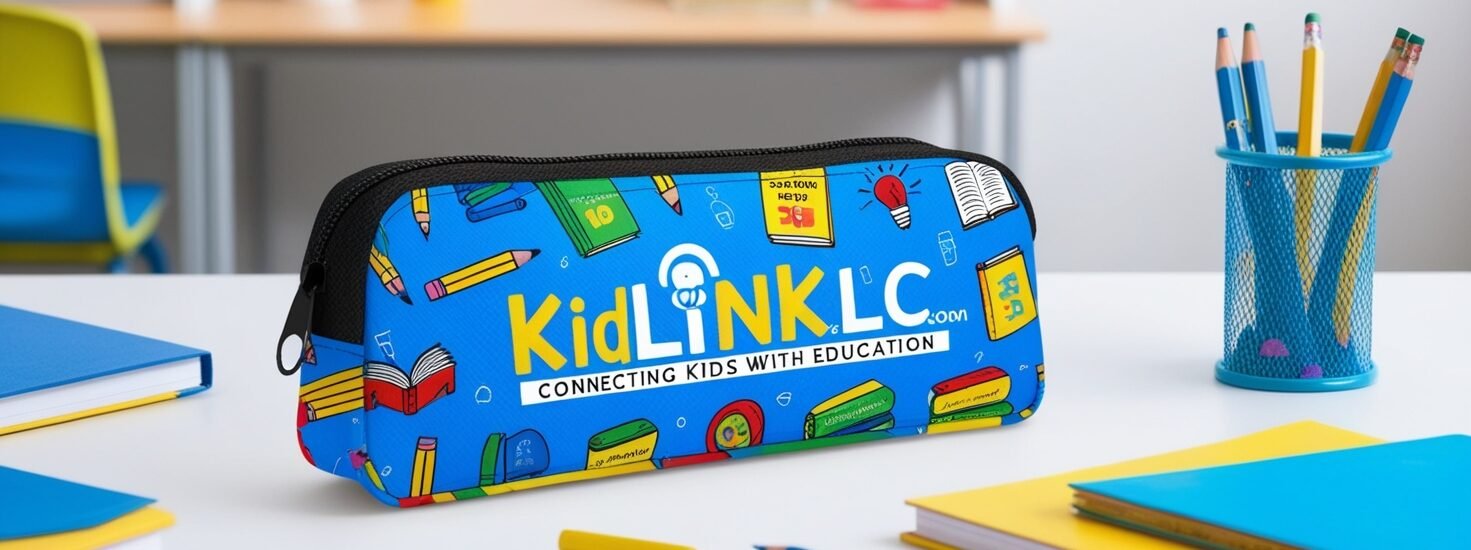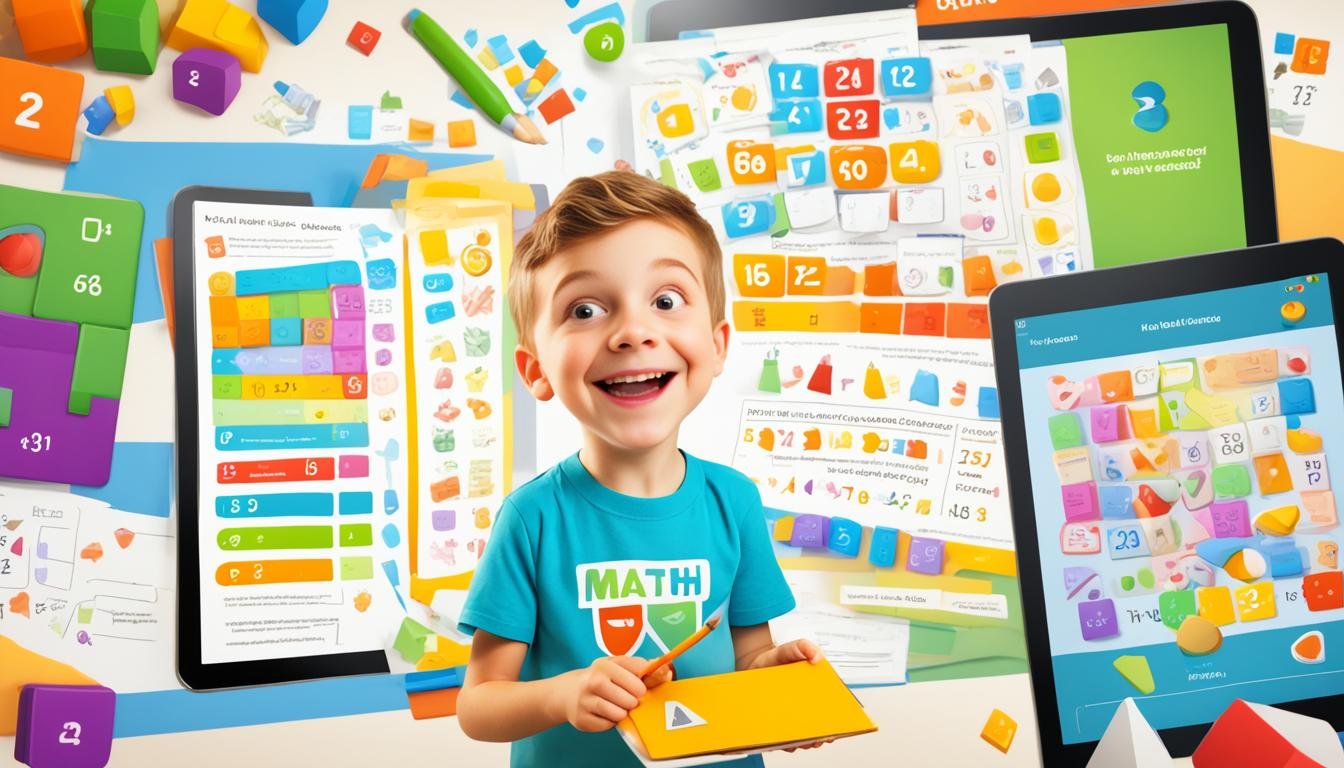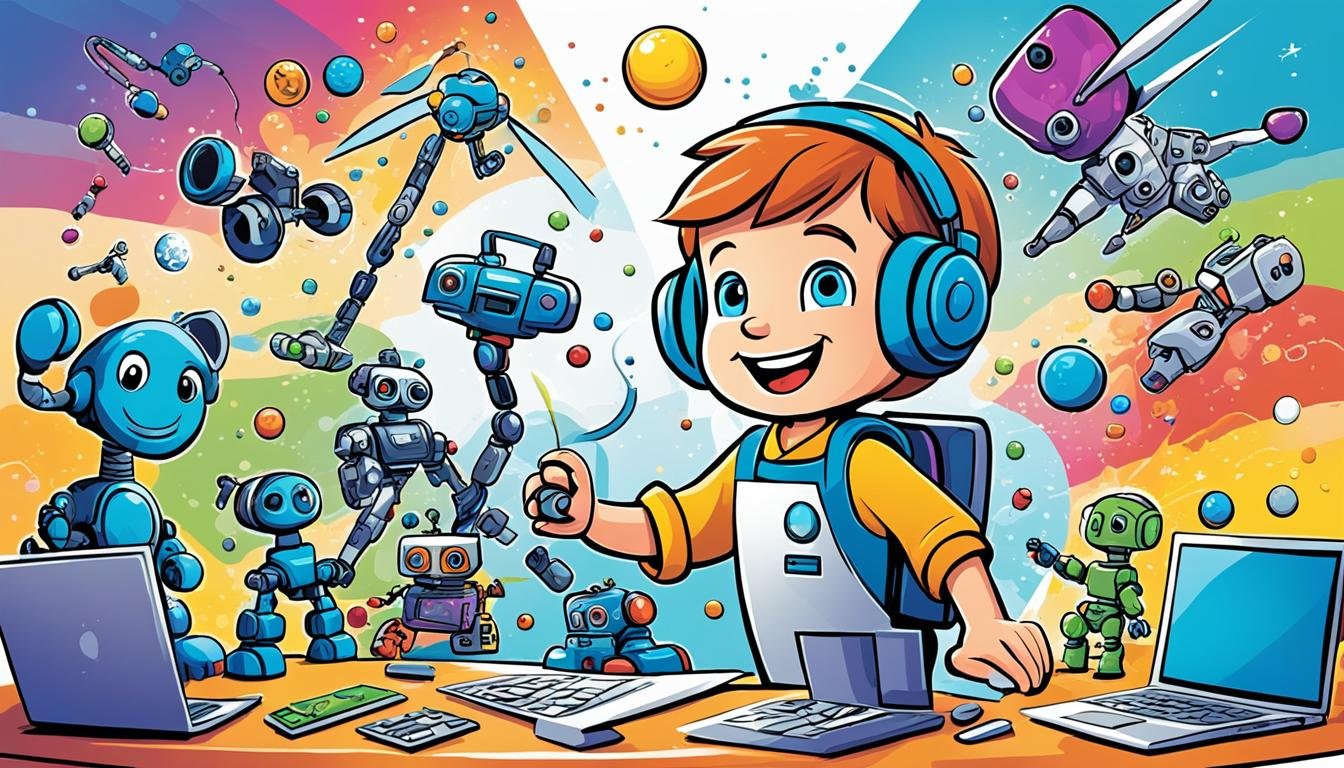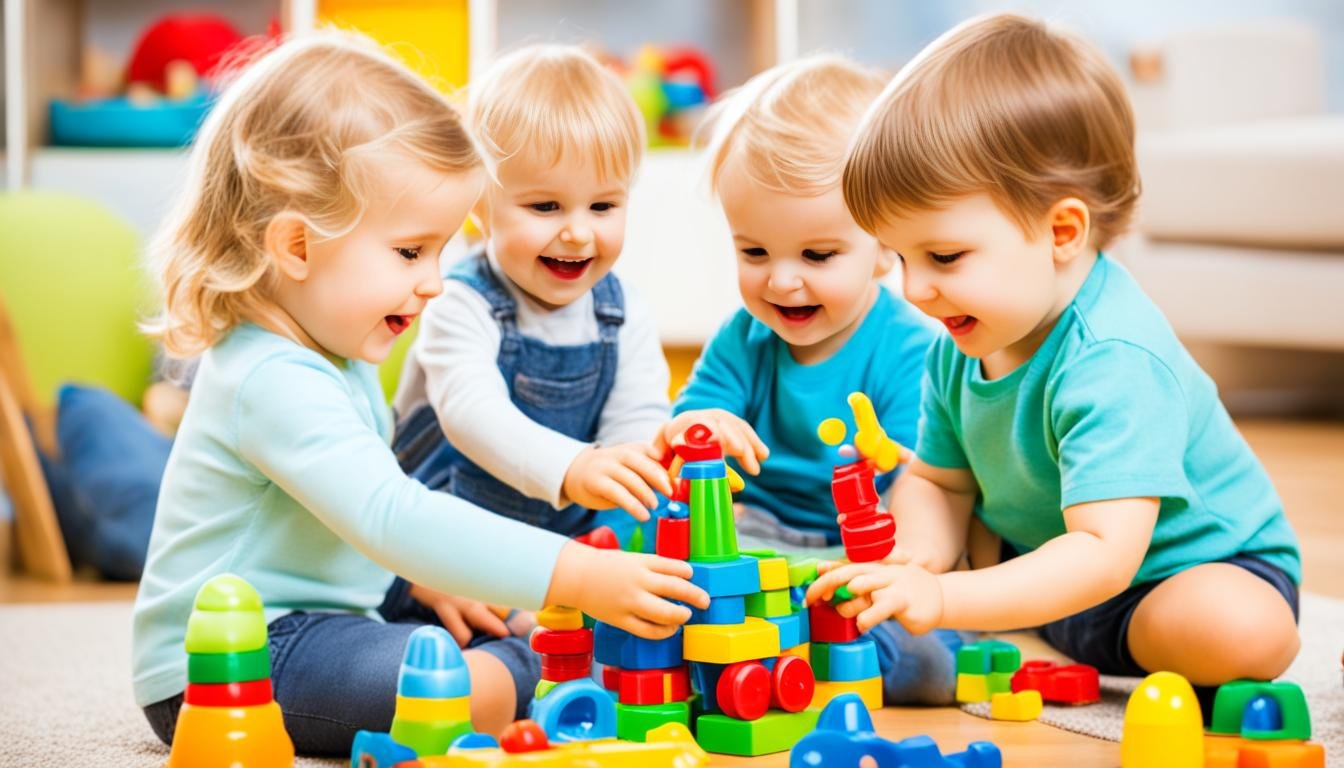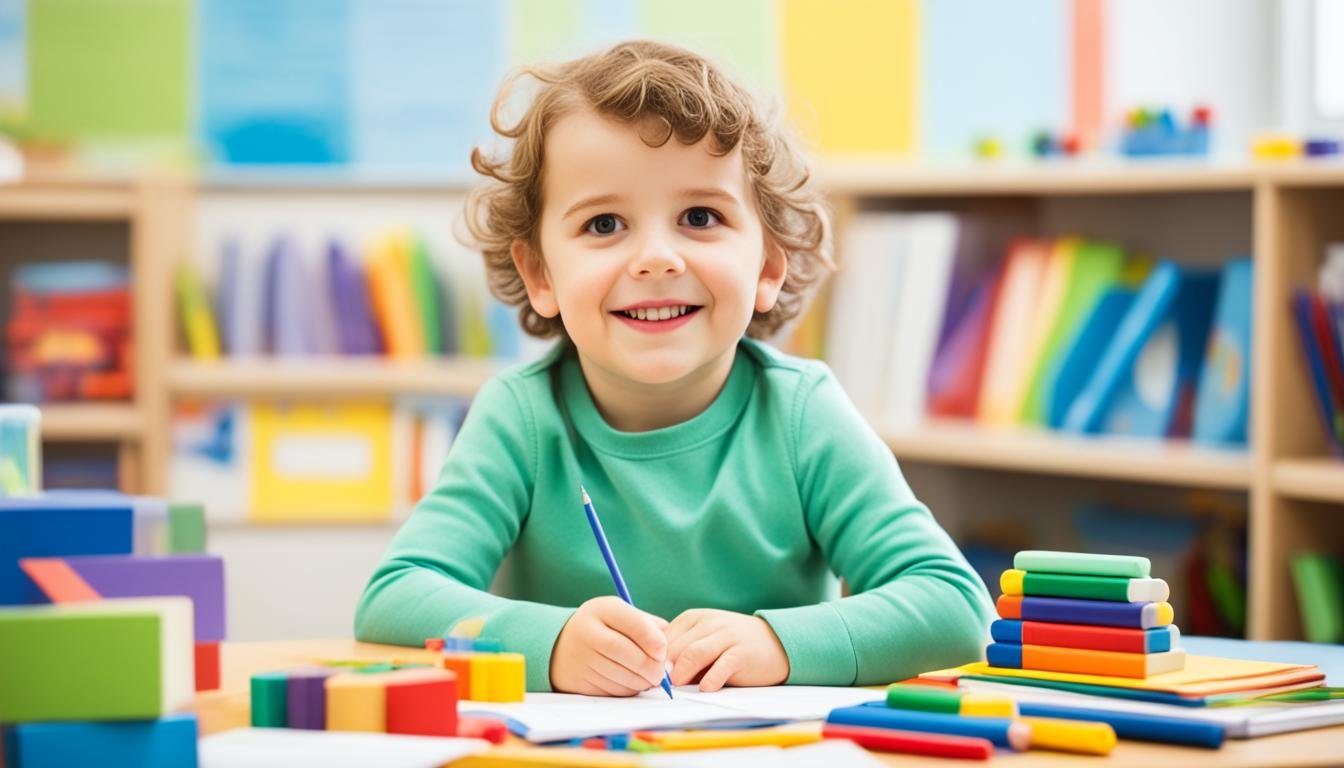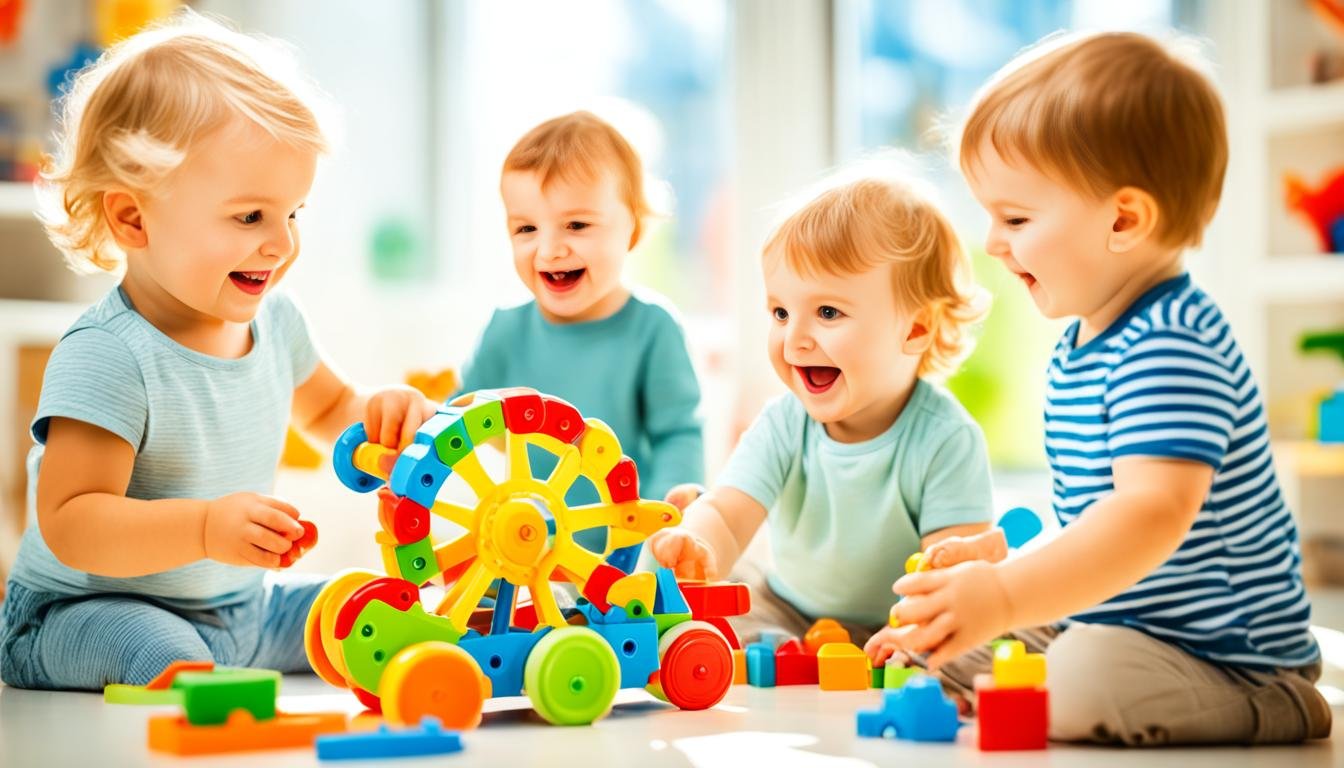How Can Parents Teach Emotional Resilience to Their Kids?
Have you ever thought about why some kids get over tough times easily, while others find it hard? Teaching emotional resilience to kids is key in our fast-moving world. It helps them deal with things like bullying, school stress, or losing someone close. These skills aren’t just something kids are born with. Parents can help build them through special actions.
By learning how to make our kids resilient, we help them do well through life’s ups and downs.
Key Takeaways
- Emotional resilience helps children cope with challenges and setbacks.
- Teaching emotional resilience is a learned practice for both parents and children.
- Resilient children are better equipped to handle peer pressure and academic stress.
- Intentional parenting plays a critical role in emotional resilience education.
- Building resilience in children can lead to improved emotional well-being.
The Importance of Emotional Resilience in Childhood
Emotional resilience is key for kids as it helps them deal with life’s ups and downs. Kids often face many challenges, like adjusting to new places or dealing with loss or bullying. It’s crucial to help them build emotional resilience so they can cope better with stress and anxiety.
Studies show that kids with strong emotional well-being do better in life. They bounce back faster from tough times and connect better with friends. They also face challenges with more confidence and enjoy their hobbies more. By teaching kids about emotional resilience, parents and teachers give them important skills for life.
Building emotional resilience helps kids stay mentally healthy and prepares them for life’s hard times. I’ve seen that when kids learn to overcome obstacles, they gain valuable skills. These skills help them understand themselves and their feelings better in the future.
To learn more about helping kids, check out KidLinkLC.com. It’s all about connecting kids with great education and learning tools.
Understanding Emotional Resilience
Emotional resilience means being able to handle stress and tough times well. It’s not something all kids naturally have, but it can be taught. It’s also tied to emotional intelligence, which is knowing how you feel and understanding others.
This skill helps my kids deal with their feelings and grow emotionally. It’s key for their mental health.

Studies show that emotional resilience is key for kids’ mental health. Kids who are resilient do better in tough situations. They get along better with friends and adults. They also handle their feelings and bounce back from problems more easily.
Building resilience takes time and effort. It needs ongoing support, encouragement, and a safe space for kids to share their feelings. By doing this, I can help my kids develop important emotional skills for life.
| Aspects of Emotional Resilience | Impact on Children |
|---|---|
| Adapting to Stress | Improved coping strategies and reduced anxiety |
| Understanding Emotions | Stronger relationships and better communication skills |
| Overcoming Adversity | Increased self-confidence and independence |
| Empathy Development | Enhanced social skills and better peer interactions |
How to Teach Emotional Resilience to Kids
Teaching kids about emotional resilience is key for their growth. By showing them how to handle tough times, I help them see how to get through challenges. This way, they learn to deal with their own problems.
Model Resilient Behaviors
I talk to my kids when I face hard times. This shows them that everyone goes through struggles. To model resilience in children, I share how I solved problems. This teaches them about sticking to it and staying positive.
Encourage the Embrace of Mistakes
It’s important to see mistakes as chances to learn. I share my mistakes and how they helped me grow. This shows them that mistakes can lead to success. We talk about their mistakes to show that challenges teach us.
Helping them manage their feelings makes them see mistakes as steps to getting better. This approach helps them grow and improve themselves.
Parents can help their kids build resilience. Seeing resilience in action helps them understand and handle life’s ups and downs. For more info on privacy and practices, check this link.
Building Blocks of Emotional Intelligence
Understanding the basics of emotional intelligence is key for kids. It helps them grow emotionally and learn important skills. These skills help them deal with their feelings and those of others.
Defining Emotional Intelligence for Children
Emotional intelligence means knowing how to handle your own and others’ feelings. For kids, it’s vital for making friends, getting along, and bouncing back from tough times. Learning about emotional intelligence helps kids share their feelings better. This leads to better relationships with friends and adults.
The Role of Emotional Regulation Skills
Knowing how to control your feelings is a big part of emotional intelligence. Teaching kids how to handle their emotions helps them act instead of just reacting. Here are some ways to help:
- Labeling Emotions: Encourage kids to name their feelings. This helps them understand and be aware of their emotions.
- Breathing Techniques: Deep breathing can calm kids down when they’re stressed.
- Problem-Solving Discussions: Talk about how to deal with problems emotionally and behaviorally.
- Role-Playing: Practice different emotional responses in pretend scenarios.

Using these methods, parents can really help their kids grow emotionally. This not only boosts their emotional skills but also prepares them for a life of emotional awareness and strength.
Fostering Problem-Solving Skills
Teaching kids to solve problems is key to building emotional resilience. When I teach them to solve problems, I give them the tools to tackle challenges bravely. Working together on problems improves their critical thinking and makes them more independent.
How to Effectively Solve Problems Together
Working on problems together is rewarding. I make sure my kids share their thoughts and ideas when facing challenges. This teamwork includes:
- Talking openly to understand everyone’s view.
- Coming up with solutions without criticizing them.
- Looking at the good and bad sides of each idea.
- Picking a solution and making a plan to do it.
- Thinking about what happened to see what worked and what didn’t.
This way, I’m not just teaching kids to solve problems. I’m giving them strategies to build resilience for the future. Guides on emotional resilience, like this one, offer great advice on how to do this.
Trial and Error as a Learning Tool
Trying things out and seeing what happens teaches kids to see mistakes as chances to learn. I tell my kids it’s okay to face challenges. How we handle them is what counts. Letting them deal with setbacks helps them grow resilient.
Here’s how to make this work:
- Let them try new things in safe places.
- Appreciate their hard work, no matter the result.
- Tell them that not giving up is important.
By doing these things every day, my kids become more confident in facing challenges. Trying and failing becomes a way to learn and grow. This approach is key to building their problem-solving skills and getting ready for the future.
Daily Routines and Consistency
Setting daily routines for kids is key to building emotional strength. A steady routine makes a safe space for kids to grow and feel secure. It helps them feel sure of what will happen next, which boosts their emotional growth.
The Role of a Stable Routine
Having a consistent schedule is a big plus for kids. When I stick to structured daily routines, my kids feel less stressed and more in control. They like knowing what to expect, which helps them be more resilient.
This predictability gives them a sense of stability. It’s great for their emotional growth.
Flexibility and Adaptability in Routines
But, being flexible is just as important as sticking to a routine. Life changes suddenly, and teaching kids to adapt prepares them for the future. Adding flexibility to their daily plans helps them deal with surprises well.
This skill is key in building emotional strength. It shows them they can handle changes and even welcome them.

By mixing stability with flexibility, we teach kids to handle different situations. They learn to deal with both planned and unexpected events. This prepares them for life’s ups and downs.
Teaching Coping Skills and Self-Care
Teaching kids how to cope is key to their well-being. As a parent, I’ve seen how self-care helps kids emotionally. It helps them deal with feelings and stress better.
Encouraging Basic Self-Care Practices
Starting with simple self-care is crucial for kids. It lays a strong base. I recommend activities like:
- Regular physical exercise: Being active outdoors or in sports lifts their mood and energy.
- Healthy nutrition: Choosing healthy foods is good for their health.
- Quality sleep: A good bedtime routine improves their mood and focus.
- Expressive activities: Giving time for art, music, or writing lets them express feelings.
These self-care habits teach kids the value of caring for themselves. It builds resilience over time.
Implementing Mindfulness Practices for Kids
Mindfulness is key for kids to manage their feelings. Here are some techniques:
- Breathing exercises: Deep breathing calms their minds when stressed.
- Guided imagery: Visualizing peaceful places helps them relax mentally.
- Gratitude journaling: Writing down what they’re thankful for makes them more positive.
- Mind-challenging games: Games that focus on attention improve their concentration.
These techniques give kids the skills to face emotional challenges in a healthy way. For more on building resilience, check out this resource.
Using these strategies daily helps kids put their mental health first. It sets a strong base for tackling future challenges.
Positive Self-View and Self-Affirmation
Helping kids see themselves in a positive light is key to their growth. I use simple yet powerful ways to build self-confidence in them. By showing them their value and celebrating their wins, we lay a strong base for their emotional health.
Helping Kids Build a Positive Self-Image
It’s crucial to help my kids see their strengths. I use positive words to boost their confidence. Saying “You are capable” or “You did a great job” helps them feel safe to try new things. This builds a strong, positive view of themselves and boosts their confidence to tackle challenges.
Recognizing Achievements and Progress
Noticing small wins is big for kids. Celebrating things like good grades or new skills is important. It shows them their hard work pays off and motivates them to keep going.
By focusing on their progress, we help them build a strong sense of self. This sets them up for emotional well-being as they grow.

Maintaining Connections with Others
Creating and keeping social connections is key for a child’s emotional growth. Strong bonds with supportive adults and friends lay a solid base. These relationships help kids bounce back when life gets tough.
Creating a Supportive Network of Role Models
Role models teach kids how to express emotions and bounce back. Adults can show them how to deal with problems. By being there and building trust, parents create a safe space.
- Seek out mentors who align with their values.
- Encourage interactions with other caring adults.
- Share personal experiences to highlight life lessons.
These steps help build networks of emotional support. This lets kids tackle challenges with confidence. For more tips, see this resource on fostering resilience.
Encouraging Friendships and Peer Support
Friends are crucial for kids’ social lives. Encouraging kids to be social helps them find support and learn important social skills. Parents can help by:
- Arranging playdates or group activities.
- Promoting open communication about their feelings toward friends.
- Helping them understand the value of empathetic relationships.
These steps help build strong friendships and emotional support networks. By teaching social-emotional learning, we help kids thrive in connected and supportive environments.
https://www.youtube.com/watch?v=JMNR8nzVbmM
Finding Opportunities for Self-Discovery
Exploring emotional resilience in children shows how important self-discovery is. It’s not just a trend; it’s a key way to build resilience. By helping kids reflect on their challenges, they learn more about themselves and gain confidence. This reflection helps them find their strengths and areas to improve.
Reflecting on Personal Challenges
Encouraging kids to think about their challenges teaches them valuable lessons. Talking about past hurdles helps them see challenges as chances to grow. I ask my kids to recall times they faced obstacles and how they got past them.
This helps with self-discovery and builds resilience. Reflecting deeply on these moments helps them understand their experiences better. It also helps them grow emotionally.
Promoting Goal-Setting as a Confidence Builder
Setting goals is key for kids. I help my children set goals that are realistic and reachable. These goals help them feel accomplished and make self-improvement fun.
Reaching these goals, big or small, adds to their personal story and boosts their confidence.
In conclusion, reflecting on challenges and setting goals helps my kids become more resilient. By doing these things every day, they become more confident. Teaching children emotional resilience sets them up for a happy future.

| Strategy | Description | Impact on Resilience |
|---|---|---|
| Personal Challenges Reflection | Encouraging discussions on past obstacles | Enhances self-awareness and emotional regulation |
| Goal-Setting Techniques | Establishing achievable goals for personal growth | Boosts confidence and motivation |
Teaching Kids to Manage Emotions
Emotional coaching helps kids understand and express their feelings. It gives them the tools to handle their emotions. By teaching them to label their feelings, they learn to deal with life’s ups and downs.
Emotional Coaching Techniques
Using everyday situations to talk about feelings is a great way to help. I ask my child how they feel about certain events. This helps them learn new words and understand their emotions better.
It makes it easier for kids to manage their feelings. Seeing how others feel in similar situations helps them connect with their own emotions.
Helping Kids Navigate Feelings Appropriately
Discussing emotions helps kids learn how to regulate them. For example, when my child feels frustrated, we talk about it. I suggest ways to calm down, like deep breathing or taking a break.
This helps them get better at handling their feelings. It makes them more confident in different situations.

These methods help my child become emotionally strong. It takes time and effort, but it’s worth it. For more tips, check out strategies for raising resilient kids.
| Technique | Benefits | Example Activity |
|---|---|---|
| Emotion Vocabulary Expansion | Enhances emotional understanding | Identify feelings in storybooks |
| Role-Playing | Builds empathy and problem-solving skills | Act out scenarios of disagreement |
| Emotion Check-Ins | Promotes awareness of feelings | Daily reflection on emotions |
| Problem-Solving Discussion | Encourages proactive thinking | Work together on resolving a conflict |
Utilizing Resources for Mental Health Education
Getting the right resources is key to improving mental health education for kids. By using children’s mental health resources, parents and teachers can create a supportive environment. It’s important to know how schools can add mental health programs to help students become resilient.
Effective Use of Children’s Mental Health Resources
There are many tools available for mental health education in kids. From books to workshops, these resources offer valuable insights. By connecting with local groups and online sites, parents can learn and support their kids’ emotional health.
Integrating Mental Health Programs at School
Schools can boost emotional strength by adding mental health programs to their lessons. These programs teach kids how to cope and offer support. Adding social-emotional learning can greatly help kids’ mental health, especially for those who are disadvantaged. Studies show that good parenting and strong community support lead to better outcomes, as seen in this insightful research.

| Resource Type | Description | Benefits |
|---|---|---|
| Workshops | Interactive sessions focusing on mental health topics. | Enhances knowledge and provides practical strategies. |
| Literature | Books and articles on children’s mental health. | Increases awareness and offers guidance for parents. |
| Online Platforms | Websites offering counseling and educational materials. | Accessible resources for information and help. |
Promoting Resilience Through Positive Psychology
Positive psychology for children focuses on strengths and virtues. It helps kids become more resilient. By adding positive psychology activities to our daily lives, we support them in building a strong mindset. This mindset helps them face life’s challenges.
Incorporating Positive Psychology Activities
Positive psychology activities boost emotional wellness in kids. They make kids feel good and help them feel accomplished. Some great activities are:
- Gratitude Journals: Writing down things they’re thankful for each day helps kids focus on the good things.
- Acts of Kindness: Doing small acts of kindness makes kids feel part of a community.
- Visualizing Success: Helping kids imagine their goals can increase their confidence and drive.
Engaging with Emotional Wellness Activities for Kids
Adding emotional wellness activities for kids to daily life helps them grow emotionally. These activities let kids express feelings and learn how to cope. Here are some easy ways to do this:
- Mindfulness Exercises: Simple breathing or guided imagery can help kids handle stress.
- Creative Arts: Painting or making crafts lets kids express themselves and deal with feelings.
- Physical Activities: Playing sports or being outside with friends promotes teamwork and positive social skills.

Strategies for Building Resilience in Kids
As a parent, I always look for ways to make my kids emotionally strong. Teaching them how to deal with life’s ups and downs is key. It’s important to find strategies that fit their needs.
Identifying Specific Resilience-Building Strategies
Teaching kids to bounce back from setbacks is vital. Encouraging them to solve problems on their own boosts their ability to cope. Activities that make them think for themselves are great for this.
Talking about feelings and praising their effort, not just results, teaches them to keep going. This approach helps them see the value of not giving up.
Utilizing Resilience Education Curriculum
Adding a resilience-building curriculum to school can really help kids emotionally. Many schools now offer resilience education for children. These programs teach important skills like managing emotions, knowing oneself, and understanding others.
Parents can work with teachers to make these lessons even better. For more tips, check out useful resources on raising resilient kids.

Conclusion
In conclusion, emotional resilience is key for kids. It helps them deal with life’s ups and downs. By teaching them how to be resilient, we help them stay strong mentally.
Parents have a big part in teaching these skills. We can show them how to solve problems and support each other. This makes a big difference in their lives.
It’s important for me to be involved in this process. I need to act positively and teach my kids how to cope. By doing this, I help them grow emotionally and socially. This makes them better at handling life’s challenges.
Teaching emotional resilience is a long-term investment. It helps our kids now and prepares them for the future. Let’s work together to make emotional health a priority. This will help create a generation that is emotionally strong and healthy.
